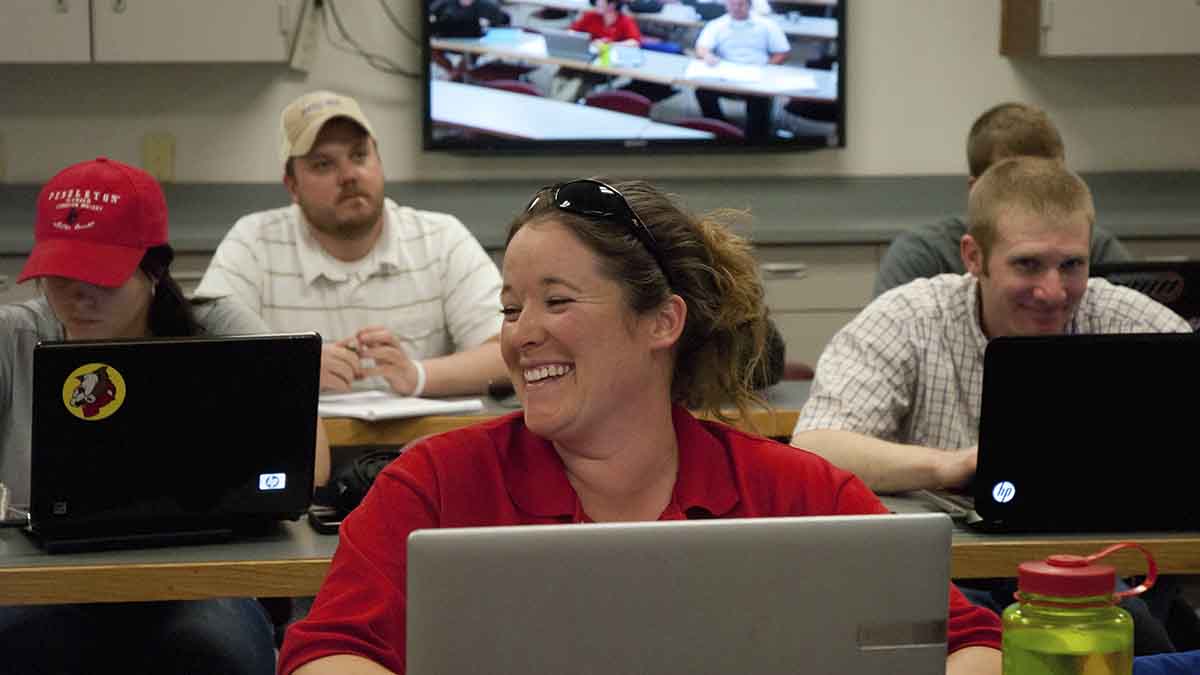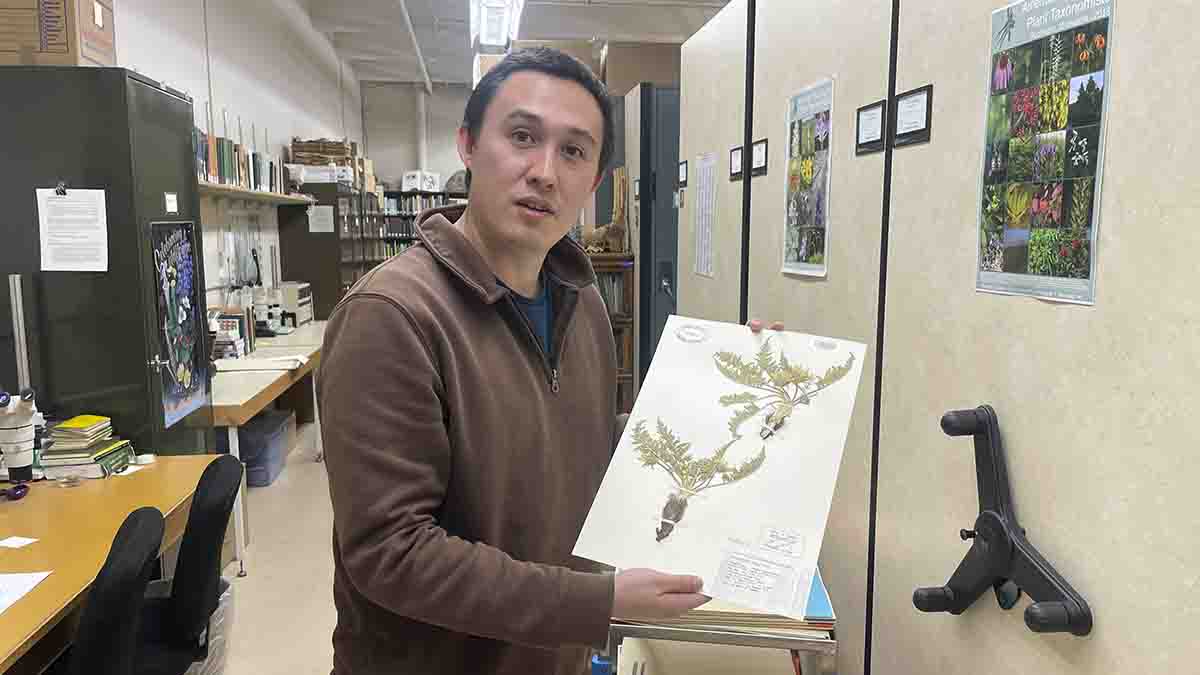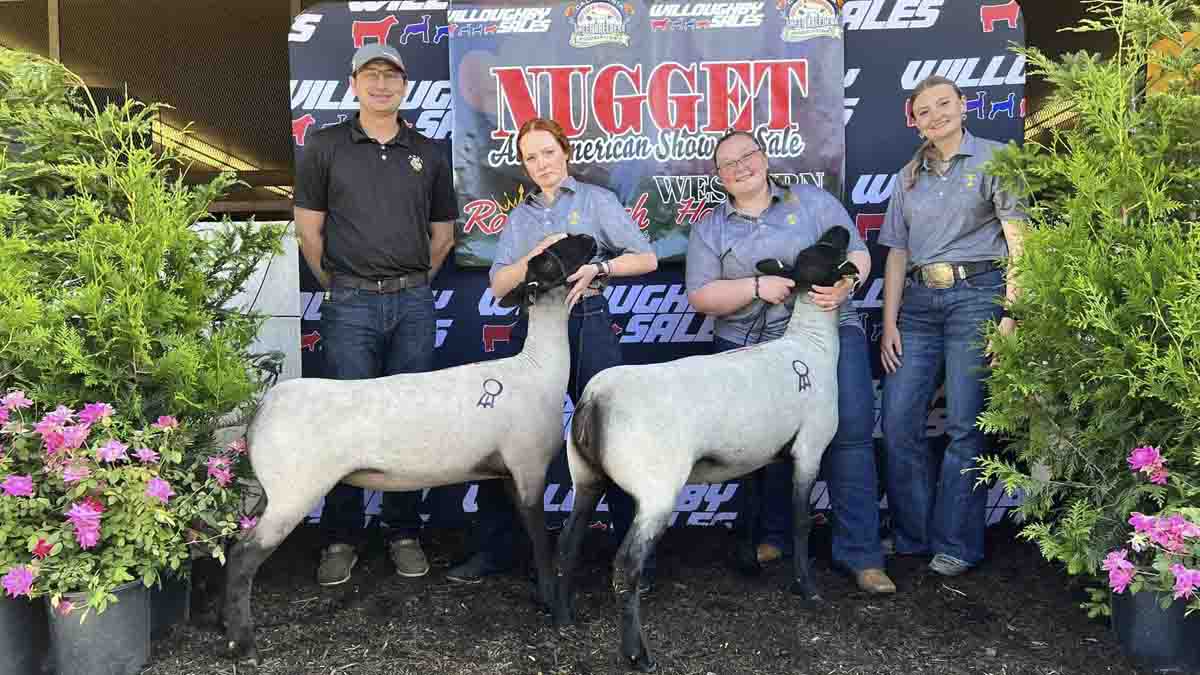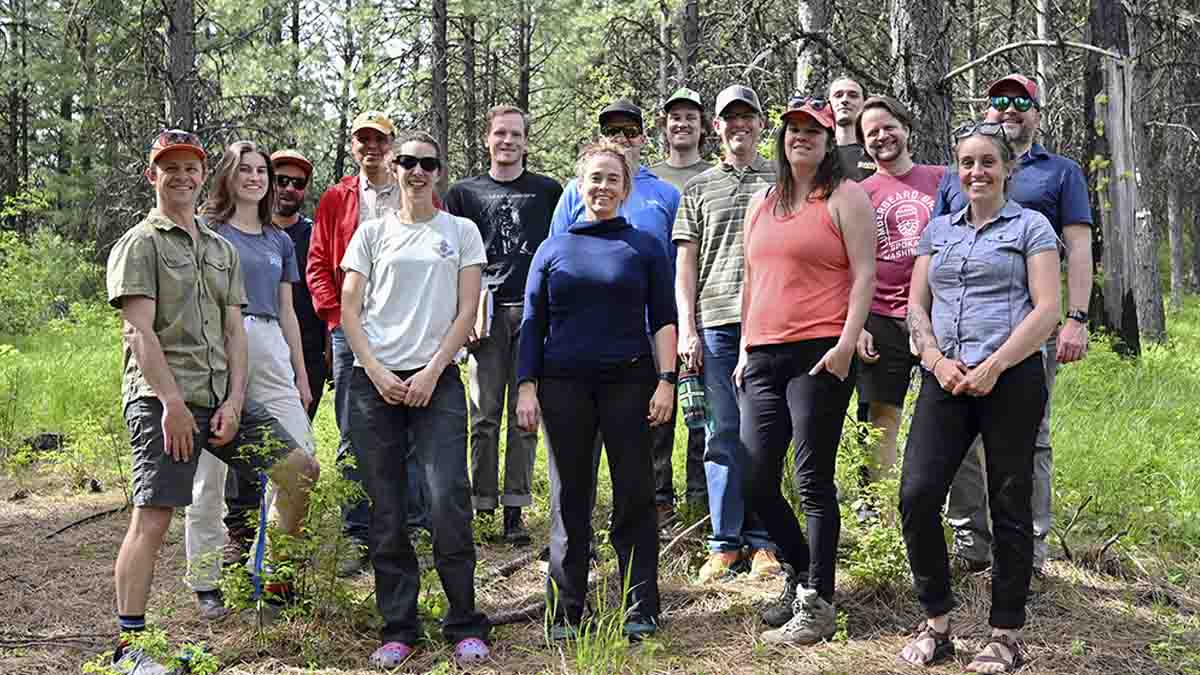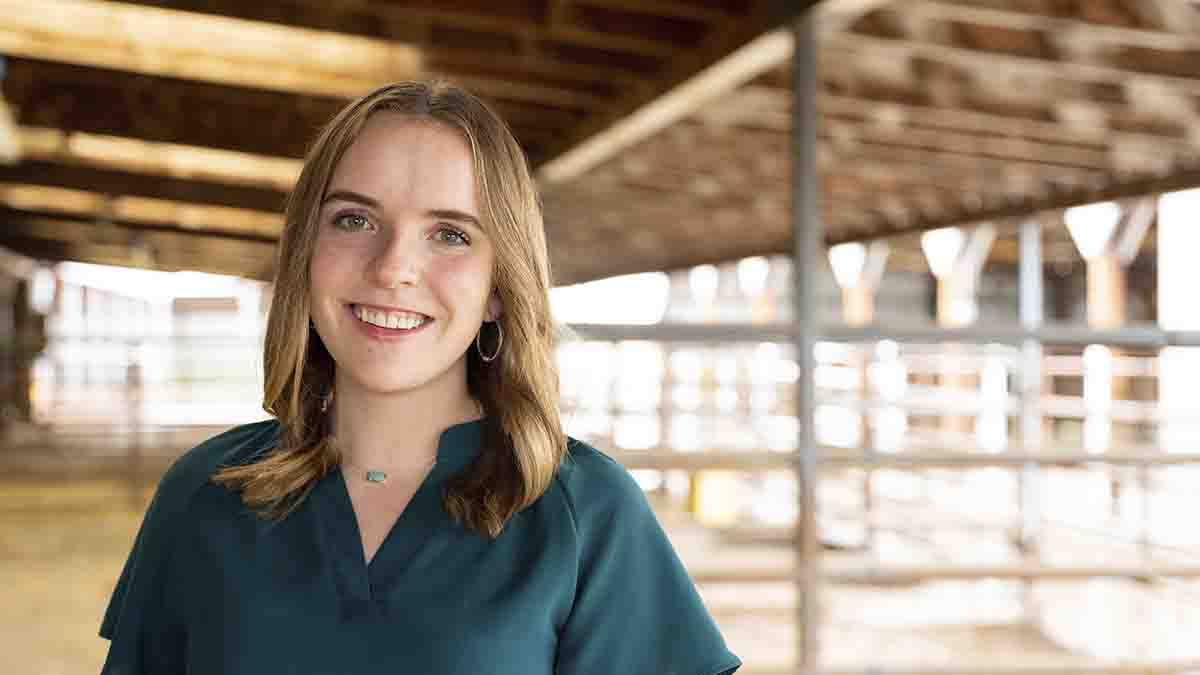Catching Up with CALS — June 12, 2024
Dean's Message — Molding Leaders
Our reputation for molding and inspiring tomorrow’s leaders precedes us. CALS invests heavily in equipping youth with sought-after soft skills — such as communication, leadership, ethics, conflict resolution and a sense of social responsibility — both by running the University of Idaho Extension 4-H Youth Development program and through our involvement in FFA. We recently received a strong endorsement from National 4-H Council that we’re on the right track. In late May we were chosen among five 4-H programs in the U.S. best equipped to roll out a new, two-year pilot program, known as the 4-H Leadership Academy. For the launch, the council prioritized land grant universities capable of achieving big goals on a tight deadline. Five participating 4-H'ers from throughout Idaho will attend regular meetings with their state and national peers emphasizing soft skills. They’ll be rewarded with a college scholarship and funding to implement a capstone community service project. We can’t wait to see the differences they’ll make in their communities through their creative projects.
We haven’t earned our strong nationwide reputation for excellence in youth development by accident. CALS is well represented on key national committees by its UI Extension 4-H professionals including Claire Sponseller, Scott Nash and Mike Knutz. Our state office is helping to form a new national committee focused on workforce readiness, poised to roll out in 2025. We’re preparing to unveil Learn Everywhere with 4-H, through which participating youth will have the opportunity to earn high school credits for completing certain 4-H programming. From June 24-27, about 300 4-H youth and their chaperones will head to campus for the annual Idaho 4-H State Teen Association Convention (STAC), where they’ll participate in service-learning projects and educational workshops led by our Extension educators. 4-H'ers who have participated in at least three conferences are eligible to serve on the State Teen Advisory Committee, which organizes the conference. We’ll further showcase our innovative ideas regarding 4-H from Oct. 15-17, when a couple of thousand 4-H personnel will come to Boise for the National Association of Extension 4-H Youth Development Professionals annual conference.
We also have exciting developments to share regarding FFA. Nearly 1,200 students and advisors registered for Idaho FFA Career Development Events (CDEs) hosted at the Moscow campus June 4-7. FFA members competed in 16 CDEs covering a host of topics such as livestock and meats evaluation, forestry, environmental and natural resources, potatoes, entomology, milk quality and products and veterinary science. Youth from Montana, Oregon and Washington were also invited to participate. To recognize the hard work required to be successful in these highly competitive CDEs, CALS awards scholarships of $1,000 for individual event winners, $500 for other high placing individuals or $500 for each member of a winning team who elect to attend the University of Idaho in a CALS major. The College of Natural Resources similarly awards scholarships for the events they host.
Though FFA is not operated by U of I, students and faculty within our Department of Agricultural Education, Leadership and Communications (AELC) organize FFA CDEs on campus, as well as a spring conference in Twin Falls. AELC trains most of the state’s agricultural teachers, who serve as FFA advisors and bring their students to campus for FFA CDEs. Notably, AELC Professor Don Edgar and Professor Kattlyn Wolf, interim AELC department head, were both honored as American Association for Agricultural Education Fellows, recognizing their outstanding contributions to the field over 10 to 20 years of active service at the university level. U of I also employs the Idaho FFA executive director, who works closely with the Idaho FFA Association, the Idaho FFA Foundation, the Idaho Agricultural Teachers Association and the Idaho FFA state officers. Effective June 1, Melissa Sherman stepped into that role, replacing Clara-Leigh Evans. Sherman has a degree in agricultural education and was an FFA advisor and agriculture teacher with Vallivue High School in Caldwell for eight years. She also served as an Oregon State University Extension educator for seven years.
Both FFA CDEs and 4-H STAC serve as tremendous recruiting opportunities, exposing students to our beautiful campus and our outstanding faculty while giving them a glimpse of campus life, including what it’s like to live in student housing. Furthermore, several faculty within our Margaret Ritchie School of Family and Consumer Sciences attended the recent state leadership conference of Family, Career and Community Leaders of America (FCCLA), which serves student leaders through 12th grade pursuing careers in the family and consumer sciences. CALS goes well beyond simply teaching subject matter. We’re preparing youth to be leaders in their communities and workplaces, setting the standard for their peers to follow.

Michael P. Parrella
Dean
College of Agricultural and Life Sciences
By the Numbers
University of Idaho’s apparel, textiles and design program recently sent 2 students and 2 faculty members on a 10-day philanthropic trip to Guatemala. They were part of a group of 50 representing the organization Hearts in Motion. In addition to teaching sewing, weaving, embroidery and felting classes in a rural community, the U of I team distributed 375 reusable menstrual pads, made and designed by U of I students, to people in 6 villages. 30 community members of all ages participated in the sewing courses. Also making the trip were doctors who performed cleft palate surgeries, dentists who extracted abscessed teeth and Washington State University students who tested for iron deficiency and Type 2 diabetes. U of I participated in the trip for the 1st time.
Our Stories

30 Years of Remote Learning
The internet was in its infancy, VHS tapes were considered modern technology and working remotely wasn’t a thing when University of Idaho’s College of Agricultural and Life Sciences (CALS) first launched a distance bachelor’s degree in agriculture.
Virtual programs and remote courses have become prevalent following the COVID-19 pandemic. In the fall semester of 1994 when CALS welcomed its first distance agriculture class, however, the idea of studying with teachers and classmates from hundreds of miles away was trailblazing.
In its 30 years, the program has provided flexibility for nontraditional students working in the Magic and Treasure valleys — and beyond — to tap expertise from U of I’s Moscow campus and earn a bachelor’s degree without having to quit a job or leave home. The program has helped 268 students working remotely earn degrees, including five graduates on May 11.
“As a land-grant university, part of our mission is to reach the stakeholders across the state,” said Amanda Moore-Kriwox, academic coordinator for a distance degree in agriculture.
The distance degree program, which is offered through the Department of Agricultural Education, Leadership and Communications, started two years after the Twin Falls Research and Extension Center opened on the College of Southern Idaho (CSI) campus. It’s designed as a two-plus-two program, seamlessly building upon an associate degree from CSI or the College of Western Idaho in Nampa. Students can tailor the program to the CALS subject matter of their choosing, selecting up to three interest areas from the various agricultural departments and family and consumer sciences.
Initially the distance program offered a general agriculture major, which eventually changed to agricultural science and technology. The program currently offers a degree in agricultural science, communication and leadership.
“The industry wanted students to have communication and leadership skills to work on teams and work well with others,” Moore-Kriwox said.
In the program’s early days, students would take classes from a room on the CSI campus equipped with large cameras. Professor Benton Glaze taught a course on the genetics of livestock improvement in that classroom, enabling students on the Moscow campus to watch the video feed. Most courses, however, were taught in Moscow, with a video feed sent to the students at the CSI campus. Lectures were also recorded on VHS for students to watch in the Magic Valley. Nowadays, lectures are recorded on Zoom and posted on the university’s online learning management system, Canvas.
The degree prepares graduates to work in a host of jobs, such as agricultural communications, natural resources agencies, agricultural businesses, Extension, marketing and others. The class requires students to complete an internship in the agricultural industry. Opportunities for internships abound in the Magic Valley, which Moore-Kriwox described as the Silicon Valley of agribusiness.
Emerson Kemper, who was among the program’s recent graduates, is coordinator of an in-vitro fertilization lab specializing in high-end dairy and beef genetics based in Jerome, called Boviteq. Kemper also works part time at the U of I Research and Extension Center in Twin Falls. Kemper held associate degrees in health science and agribusiness prior to enrolling in the U of I distance bachelor’s program.
“It’s definitely a great opportunity to get an education while also pursuing a career or starting one,” said Kemper, who specialized in animal science courses. “It also lined up really well with CSI and the credits I already had. They make it super flexible, and the professors were always reaching out and seeing if I needed help.”

New Herbarium Collections Manager
As a child, Kai Battenberg couldn’t open a bag of nuts without then arranging them all by size, eating the smallest ones first and gradually working his way toward the prized specimens at the end of the line.
He’s painstakingly orderly and methodical. While in high school in Japan, where he was born and raised, Battenberg began tending his grandfather’s garden, digitally cataloging thousands of photos of each plant at the initial flowering stage, labeled by species name, image number and year.
In short, Battenberg was the perfect choice to be the collections manager of the University of Idaho’s Stillinger Herbarium. Battenberg assumed the position at U of I on Feb. 19.
“I’ve always liked the idea of knowing the name of things. I also liked organizing things. I liked it when things were in order,” Battenberg said. “I learned in graduate school that that was one of my strengths as a scientist — I’m good at boiling down datasets to the point that you can make a simple statement about them, sorting and extrapolating.”
An herbarium is a systematically arranged collection of dried plants that provides an important record of when, where and what plant species are found. Battenberg likens his elaborate gardening photo archive to an image-only version of an herbarium.
At the Stillinger Herbarium, located in the university’s College of Mines building, Battenberg oversees a large and prized collection — the largest plant collection in Idaho and the state’s official repository. The Stillinger collection includes more than 19,000 species and 210,000 digitized specimens, available to be viewed and downloaded by anyone from anywhere in the world. The collection also contains 188,000 vascular plants — those with tissue that conducts water — about 60% of which were collected in Idaho. Battenberg and his staff have been hard at work digitally processing another 40,000 specimens.
The Stillinger Herbarium was established in 1892, but the current collection has few specimens predating 1906, when the building that formerly housed the collection caught fire.
The herbarium chronicles how the state’s flora has evolved over time in the face of factors such as invasive species, development and a changing climate. Dylan Trimmer, a freshman in the College of Natural Resources majoring in environmental sciences, has spent three hours per week in the herbarium since January, searching through specimens and cataloging data for a class research project. Trimmer has been using the collection to help identify if climate change has affected the flowering dates of three native plants that bloom shortly after the snowpack melts at various locations in Idaho.
Trimmer was surprised to find the flowering dates have remained consistent, and he may revisit the experiment to study plants that bloom in the heat of summer.
“Herbariums are important so that people like myself can do these phenological studies to look at how plant behavior has changed over time,” Trimmer said.
Battenberg will also be tasked with growing the collection by making regular trips into Idaho’s wild places to collect additional plants. He aims to gather more than 400 new specimens this summer. To be catalogued, a plant must be arranged so that every part is visible, pressed, dried to prevent mold from forming and exposed to freezing temperatures to kill any insect eggs it may harbor. Samples are then digitized — Battenberg would like to acquire a 3-D scanner to begin recording images of pinecones and other samples in the collection that can’t be pressed.
The collection also includes plant samples designated for extractive uses such as DNA testing.
Doctoral student Dan Turck, who had been running the herbarium and will graduate this fall, has been helping Battenberg make the transition, providing him insights such as ideal locations for gathering new samples.
Battenberg earned a bachelor’s degree in law in Japan in 2008 before moving to the U.S. and earning another bachelor’s degree in biological sciences from the California State University, Stanislaus. He then earned a doctorate in plant biology from the University of California-Davis, specializing in plant evolution. Specifically, he studied the evolutionary history of root nodule symbiosis, an organ through which certain families of plants can help sustain themselves by forming symbiotic relationships with special nitrogen-fixing bacteria.
Following graduate school, Battenberg returned to Japan for five years to work as a postdoctoral researcher at a research institute, RIKEN, where he continued the study of how multiple plant lineages developed root nodule symbiosis independently of one another. Here he focused on how the regulation of genes changed in the roots to result in the development of root nodules. He was attracted to the job at the herbarium for the opportunity to work with plants as whole organisms rather than focusing on plant processes at the genetic level. In the future, he’ll seek to understand the mechanism that works in the background that paves the way for plants to gain similar features multiple times independently in general, as seen in the case of root nodule symbiosis.
“Asking why an herbarium is important is like asking why it is important to learn history. You cannot go back in time,” Battenberg said. “If you want to know what was growing in Moscow 50 years ago, because now it is so developed, you can’t see any plants, someone must have collected plants 50 years ago. If a species is going extinct, the only way to know where it used to be is the herbarium.”

Benefiting Brains and Balance
Through her community fitness classes at the Idaho Falls Family YMCA, Leslee Blanch equips local senior citizens with the tools to help themselves avoid falling, improve cognitive function and stave off dementia.
Blanch, University of Idaho Extension associate educator, Bonneville County, specializing in family and consumer sciences, is a certified group fitness instructor and registered dietitian whose classes emphasize exercising the brain as much as the body.
Blanch collaborated with the YMCA to launch a weekly class focusing on fall protection for seniors, called Moving for Better Balance, last December. Classes begin at 9:30 a.m. every Wednesday at the YMCA, 155 N. Corner Ave., and are offered free, including those who aren’t YMCA members. Blanch plans to continue the classes year-round, teaching seniors how to strengthen muscles and improve their balance, stability and agility to prevent falls. Attendance varies from six to 15 participants per class.
“Improvement in hand-eye coordination, overall body coordination, stability, agility and mental focus are common benefits experienced with focused balance work,” Blanch said. “Balance work combined with gentle strength and flexibility exercises are key in fall prevention, maintaining independence with aging and improving overall quality of life.”
Blanch will host a free workshop teaching simple lifestyle habits to enhance and protect brain function from 6-7 p.m. Thursday, June 13 at the YMCA. The workshop, Brain Health: Protecting Your Cognitive Assets, will cover seven aspects of brain health. Those include nutrition, physical activity, mental exercise, sleep, stress management, minimizing alcohol use and avoiding harmful substances and socialization.
Blanch will serve light snacks — such as chickpea salad and whole-grain crackers — to demonstrate the types of foods people can enjoy to promote brain and overall body health. In general, she advises choosing meals with at least three-quarters plant foods including a variety of colors to get a wide variety of phytonutrients, which are important for cognitive health. She also recommends avoiding processed foods and eating foods high in omega-3 fatty acids and mono-unsaturated fats such as fish, olive oil and avocado oil.
Blanch encourages up to 150 minutes of cardiovascular exercise per week, plus strength training two to three days per week. Mental exercises, including word games and solving puzzles, help connect neurons and forge new pathways in the brain. Getting adequate sleep is also vital. Blanch cites studies of the brains of Alzheimer’s patients who chronically slept for fewer than seven hours per night. Their brains were smaller than normal, and cells were coated in amyloid plaque that wasn’t removed from the brain during sleep, muffling the ability of the cells to communicate.
“That’s what these seven pillars are about. We can’t control our genes. We can’t control everything in the environment. But let’s focus on what we can control,” Blanch said.
Blanch plans to distribute a survey following the workshop asking participants to specify what they learned, and any specific lifestyle changes they may implement as a result.
The workshop will also kick off a new class Blanch will be offering at the YMCA, called Total Brain and Body. Blanch will undergo special training to offer this 12-week course, which will be open to YMCA members and those who purchase guest passes. This course will be offered one hour per week beginning in early August. Blanch will teach specific movements to benefit people with dementia, and to those wanting to proactively reduce their risk of cognitive decline.
“We hope to draw in folks with some kind of dementia and their caregivers to come and exercise with them because research shows that physical movement can slow down the progression of cognitive decline,” Blanch said.
Seniors who have participated in Blanch’s classes have made significant strides toward improving their balance and overall wellbeing.
“I enjoy the YMCA balance class because it’s an opportunity to stay active and learn the correct movements,” one participant recently told her. “At my last doctor appointment, he told me to keep doing whatever I was doing. I feel that I am not declining.”
Faces and Places
CALS students Saydee Henning, Lena Weaver and Grace Utecht joined U of I Sheep Center Manager Dino Vinci at the Nugget All American Show and Sale in Reno, placing Reserve Breeding Slick Shorn Suffolk Ewe and Reserve Slick Shorn Suffolk Ram.
The Idaho Farm Bureau Federation has announced a $250,000 gift to CALS to support the Meat Science and Innovation Center Honoring Ron Richard.
Redox Bio-Nutrients has posted an episode for its podcast Redox Grows featuring the University of Idaho's new Center for Plant and Soil Health in Parma. Redox is a leader in bio-active, carbon-based nutrition.
Laurel Lynch and Michael Strickland will be part of a $15 million National Science Foundation (NSF) Biology Integration Institutes grant to study the long-term impact of drought and fire on forest ecosystems. The funding will create the EMBER (Embedding Molecular Biology in Ecosystem Research) Institute and will bring together researchers from a variety of institutions and backgrounds.
Mack Hagenbaugh and Hadley Beechinor have both been awarded the Cattle Drive Scholarship for Agricultural Commodity Risk Management and Trading. The $1,500 scholarship is awarded to full-time undergraduate students in CALS or the College of Business and Economics who are enrolled in the agricultural commodity risk management certificate program or the trading and capital management certificate program.



Events
- June 18-19 — Western Wheat Workers Meeting, Idaho Falls, Aberdeen
- June 18-19 & July dates — Cereals Field Days (pdf), various locations
- June 22-23 — Grass Identification Course, Rinker Rock Creek Ranch near Hailey
- June 24 — Soil Health and Cropping Systems Tour, 8 a.m. to noon, Genesee
- June 24-26 — Data Monitoring Blitz, Rinker Rock Creek Ranch near Hailey
- June 24-27 — Idaho 4-H State Teen Association Convention, Moscow
- June 26 — Farm Stress Workshop, Twin Falls
- July 8-10 — Beef 101: Beginning Rancher Development Program, Moscow
- July 17 — Twilight Tour, Aberdeen Research and Extension Center







